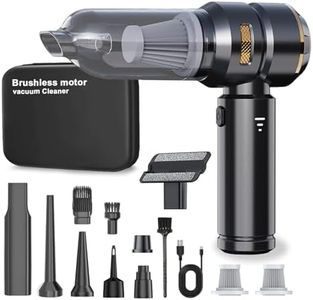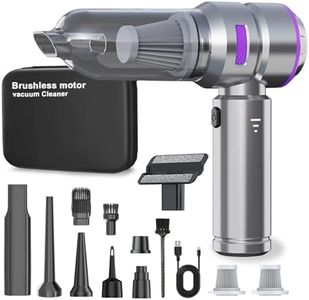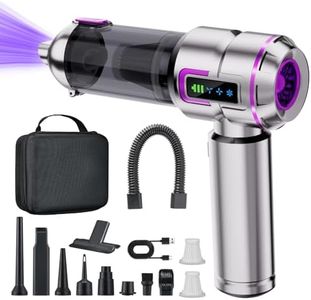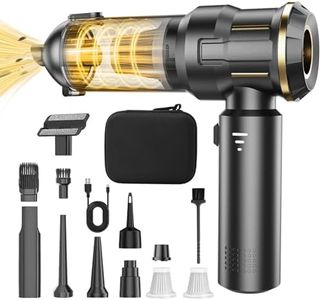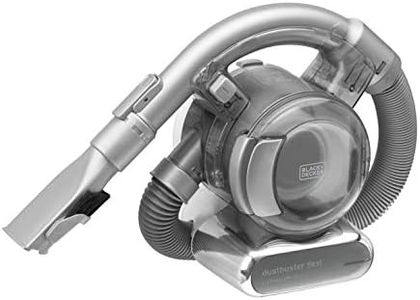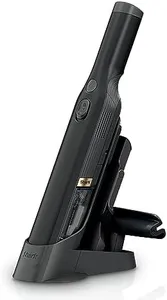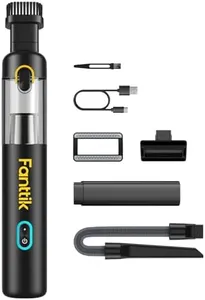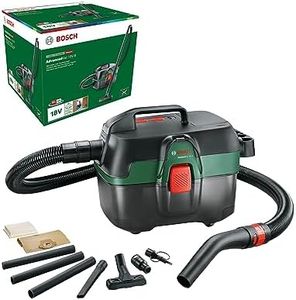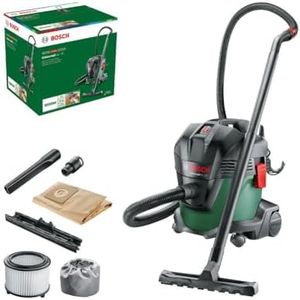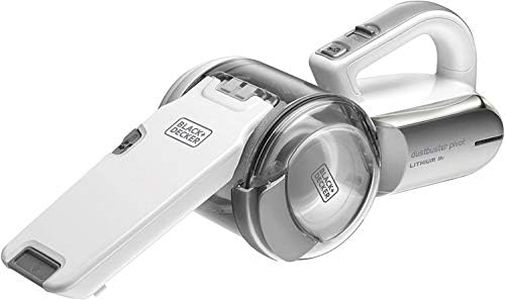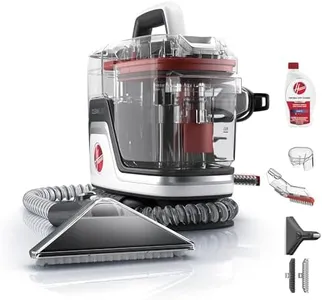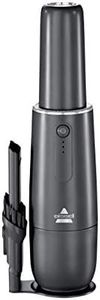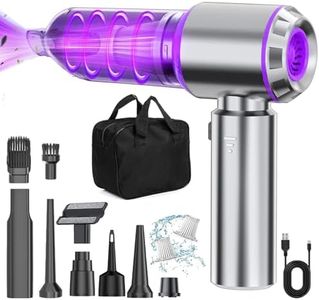We Use CookiesWe use cookies to enhance the security, performance,
functionality and for analytical and promotional activities. By continuing to browse this site you
are agreeing to our privacy policy
10 Best Car Vacuums
From leading brands and best sellers available on the web.Buying Guide for the Best Car Vacuums
Choosing the right car vacuum can make cleaning your vehicle much more efficient and less of a hassle. The key is to match a vacuum’s specifications and features with the kind of messes you encounter in your car and how often you clean. It helps to consider where you’ll be using the vacuum, the types of debris (like crumbs, pet hair, or sand), your storage space, and whether you want to clean on-the-go or only at home. Remember, the best car vacuum for you is one that suits your cleaning needs and is convenient to use.Power SourceThis spec refers to how the vacuum is powered—either through a cord that plugs into your vehicle’s 12V socket, a regular wall outlet, or a rechargeable battery. Cords plugged into a car socket give you long cleaning sessions, but you’re limited to your vehicle and need access to the socket. Corded models for wall outlets may offer more suction, but require a nearby plug and sometimes an extension cord if you clean outside. Battery-powered (cordless) models give you portability and great flexibility but typically have shorter run-times. If you want true portability and the freedom to reach anywhere in or around your car, a cordless vacuum is handy. If you clean for long stretches or have persistent, stubborn dirt (like pet hair), a corded unit could suit you better.
Suction PowerSuction power determines how effectively the vacuum can pick up dirt, debris, crumbs, and hair. It’s usually measured in air watts or listed simply as ‘strong’, ‘medium’, or ‘light’. Higher suction makes removing ground-in dirt or pet fur easier, but may make the vacuum bigger or drain the battery faster. Light suction is enough for casual, frequent cleaning of dust and dry crumbs. Moderate suction works well for typical messes, while high-powered options are best for heavy-duty cleaning. Consider the typical messes in your car: if you have kids, pets, or often haul outdoor gear, more suction is useful. For general upkeep, moderate suction is sufficient.
Tank/Canister SizeThe tank size describes how much debris and dust the vacuum can hold before you need to empty it. Larger tanks mean you can clean more without stopping, but the vacuum is heavier and bulkier. Small tanks are lighter and more compact, good for tight spaces, but they fill up quickly. If you clean regularly or just do small jobs, a small to medium tank may work well. For rare, deep cleanings or larger messes, a bigger tank is more practical. Think about how patient you are with frequent emptying when making your choice.
Attachments/ToolsAttachments include brushes, crevice tools, and flexible hoses that help you clean different parts of your car, like between seats, under pedals, or on upholstery. More attachments increase versatility, letting you tackle a variety of messes, but might make storage trickier. If you want quick surface cleans, minimal attachments may suffice. For thorough cleaning—especially if you need to reach under seats or detail upholstery—look for models with specialized tools.
FiltrationFiltration refers to how well the vacuum traps dust and small particles, which is important if you have allergies or want to keep your car’s air cleaner. Some vacuums offer special HEPA filters to catch fine dust and allergens, while others use basic filters. HEPA filtration is best for allergy sufferers and for those who want to minimize dust blowback. Standard filters are usually fine for most users, as long as you regularly clean and replace them. If you or passengers are sensitive to dust, picking a vacuum with high-quality filtration can make a big difference.
Size and WeightThe size and weight of the vacuum affect how easy it is to handle, store, and maneuver inside your car. Lighter, more compact vacuums are easier to use in tight spaces and won’t tire you out during longer cleaning sessions. Bulkier or heavier options might offer more power or larger tanks but are harder to move around. Consider how much effort you want to exert and whether you have places to store a larger vacuum. If you struggle lifting heavy things or have limited storage, a smaller, lighter vacuum will probably fit you best.
